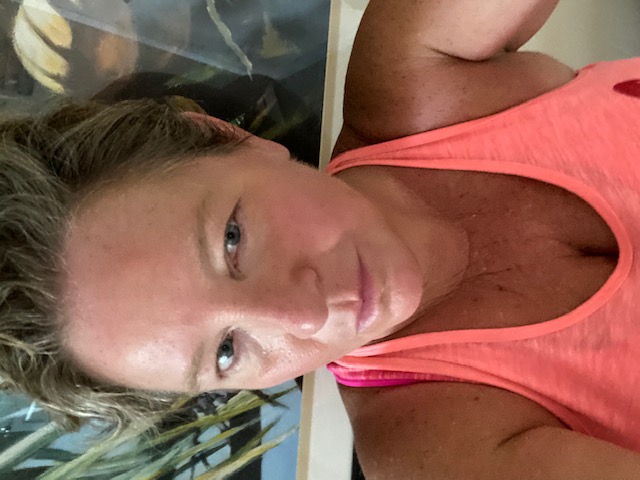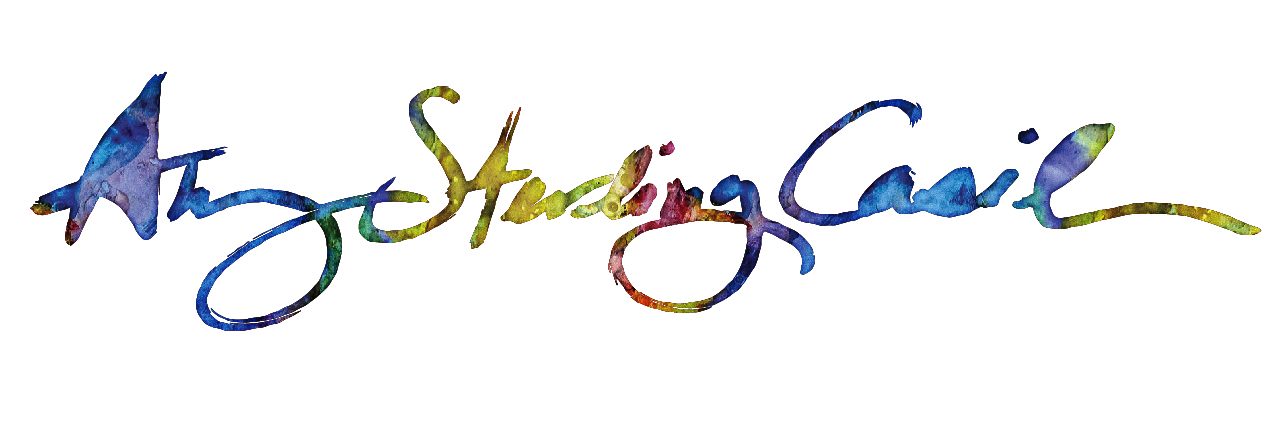Talking with a new friend the other day, I mentioned how much I enjoyed the Florida lifestyle and how amazing it was to be able to live outside most of the time. The air is so clean, even though many of the cars here are “super-sized” – from full-sized 4WD Ram trucks to Cadillac Escalades and Range Rovers. The incredible amount of plant life here must help to clean the air. I’m not so sure about our canals and the rivers and bays, but over time, I expect I’ll find out. There was a manatee in our canal this morning.
So, from a health and beauty perspective, it’s really easy to take care of skin here as long as you stay away from noseeums and mosquitos. The humidity may make my hair curl but I don’t care. You have to use sunscreen because the sun is so strong here, but again – it’s easy to do and worth spending what you can to get good mineral sunscreen. (Note: don’t use the cheap stuff for a lot of reasons – the chemicals are associated with cancer, they seep through your skin, and if you go in the water at all, they are toxic to fish and coral and other living creatures).

You get up and you’re sweating … you get out of the shower and you’re sweating …
LOL no! I just got in from a run.
Which brings me to clothes and makeup. You know, all sci-fi writers have abiding interests in clothing and makeup.
Welp – you don’t need many clothes here in SW Florida and there’s little point in makeup. You will sweat it off. If you put anything on that’s going to stay on, it will be so harsh and garish that it will look awful. The less, the better. Now that I have my hair back again, I am so happy. I didn’t cut my hair for a long time because, when I started, I was actually trying to save money. Then over time it became “How long can I grow it?” Of course it’s not my style. Glad to be “me” again.
So enough about me. On to the coyotes of Sanibel Island. And a story about a book I’ve looked in many times, but never read. The reason we are in Florida is that I had complained several times to Bruce how sad and depressed I was that there seemed to be no shell left on any California beach. I think it had been at least five years since I’d found any notable shell on any beach, anywhere up and down the state. Maybe in July or August of last year, we even went to Silver Strand State Beach which is south of Mission Bay and noted for shells (supposedly), and I was able to find only one sand dollar in a 3.5 mile walk. You still cannot find anyone openly discussing the lack of shells on beaches in Southern California (and Central Coast and northern beaches). It’s clearly a result of climate change. When we went fishing from Dana Point shortly before we left, the guys on the boat talked openly about how dirty the water was. Before we left, we started to see commercial fishing offshore, which hadn’t been seen close to California beaches for years. And the smog had been creeping in, stunning to see after years of cleaner air and so much effort. Environmental badness all-round.
So, in January, we flew to Sanibel Island and stayed for a week. Not only did I mail two big boxes of shells home, I left these shells with our neighbor Elizabeth when we moved. There are more than enough shells here that they seem to be an endlessly-renewable resource. Judging by spring and summer here, winter seems to be a little better shell season than these times, but I’ve picked up a few treasures. Bruce and I even got two “grandpappy” shells while touring the Everglades in January – a massive lightning whelk and a fighting conch – both at least 8-10 inches in length.
Not long after we returned to Southern California, we were looking at places to move to along the southwest Florida coast. And we left – nearly the last day that we could, I think, during the first part of the COVID-19 crisis. We drove cross-country March 26-March 30.
Sanibel and Captiva Islands are a little south of where we are now in Punta Gorda. They are world-renowned for the beauty of their shells and their preservation of unspoiled nature for wildlife. A large part of Sanibel is the J.N. “Ding” Darling Nature Preserve. Both islands have not allowed high-rise development, and there’s ample open space as well as, on Sanibel, the extensive “Ding” preserve and wildlife area. It is a haven for birds, fish, dolphin, you name it. If you have ever wanted to see a roseate spoonbill, “Ding” is one of the places to go. If you love seabirds, you will see every type you can imagine at “Ding.” Also, wear bug spray.
So, when I was growing up, my grandmother, the renowned and feared “Nana,” had a few favorite things, one of which was a slender, beautiful volume, Gift From the Sea, by Anne Morrow Lindbergh.

Growing up, I often looked in this small book, and I suppose I read a little of it, but what I mostly did was gaze at the delicate drawings of shells which were its illustrations. I thought it was about the ocean; little did I know that now I was re-acquainted with it by a lady on Sanibel — it was about this lovely woman’s ideas of where a woman should go, and each chapter, inspired by a shell that she had found while staying on, not Sanibel, but the smaller, more northerly companion island, Captiva. Captiva is today, the demesne of rich people’s mansions, a couple of resorts, and the awesome, retro, down-to-earth Jensen’s Marina. Oh – and the beach at the end of the road is very nice – but there’s no such thing as “not a nice beach” in Southwest Florida.
Yes, I found where I should be by haphazardly visiting the island where a woman my grandmother deeply admired, Anne Morrow Lindbergh, had written a beloved book about women finding their way in life. Through shells.
We are so out of touch with nature, I think, that such things seem novel — strange — unusual. A shell seems to us to be a magical thing, but perhaps ever it was so.
So we took Gambit to one of the beaches on Sanibel last week (Algiers Beach, I think).

I think this is Stump Pass Beach but … hey … that’s the Gulf of Mexico.
Driving back, we weren’t far from the “Ding” Darling Preserve when Bruce said, “What’s that in the road? A deer?”
“It’s deer-colored,” I said. But as soon as the fairly tall, rangy animal moved, we could tell it was no deer.

Hm. What is it?? It was almost fox-like in coloring, but far too tall to be a fox.

Probably too hard to see from this sad attempt at blowing up the picture, but it was a very dark and sleek looking, tall, rangy coyote. He ran in front of our car, glancing back over his shoulder at us, then disappeared into someone’s property on the other side of the road. As soon as he looked back, I knew from his yellow-green eyes he was a coyote.
Yes, there are coyotes on Sanibel Island, between 25 and 30 of them. They have only been there since 2012, or so “reports” say.
Before we left Laguna Woods, our much smaller, sandy-colored So Cal coyotes were boldly trotting in twos and threes throughout the neighborhood, looking for stray 3 pound Yorkies or elderly cats to gobble.
With eyes and ears open here, there are so many animals to see and so many beautiful plants. Just — bug spray.
I now have a book that I need to read that I should have read years ago — it is among the hundreds I left behind or gave away before we moved. Did you know that at one point, I had 5,000 books? No? Oh, well — they are all gone to good or bad or no homes now.
Now I pick up shells on the beach, but seldom keep them. I have a tiny collection of orange and red scallops. I keep them in a tiny porcelain dish with a miniature sea turtle in it that I bought for Bruce this past Christmas. Small and light, I saw nothing wrong with taking this dish with us to Florida.

Every day it seems, comes a new revelation, a change of feeling, a different insight.
Jogging with Gambit earlier, we saw Big Boy, the massive Muscovy duck who must surely outweigh Gambit’s 11 pounds, heaving his bulk across Marion Ave. near the teenage alligator’s pond. Big Boy has improbably grown even fatter in this heat and seems to do little except shuffle between the two ponds throughout the day. He held up a number of cars on his journey, and was so lazy that as we passed, the best he could do as he lay in the damp grass under an elderly oak was mouth vague warnings through his gray/white/red mottled bill.
The evening is soft now and the westerly sun is casting its long rays through the lanai shutters. The sun stays strong here even in the late afternoon, right into sundown.
I think of the beautiful, fine-boned Mrs. Lindbergh walking along Captiva’s shores. Hurricane Charley came in 2004, one of the strongest ever to hit the U.S. So she may well have walked between Captiva and North Captiva — the hurricane cut a channel between the two islands, and North Captiva can now be reached only by boat, like a lot of places here.
I see her bend to pick up a shell; I could never associate the awkward “Sanibel Stoop” with such a lovely woman. I think of the quiet lives of the imagination these women must have lived, for I feel her in my mind as I see my grandmother, and as I see Eleanor Roosevelt. Their lives ever so much freer than so many womens’ yet still, so very unfree. From their clothing to their hair to what they could say, they held their innermost thoughts to themselves. But then shell by shell, Anne Morrow Lindbergh wrote her Gift from the Sea.
So many things, our culture has taken from us, from our ability to be kind to each other and accept our differences, to our ability to notice the tiny things: a shell, a dragonfly (for there are so many now, and they are as big as hummingbirds!), the tiniest flicker in the water which is a fish, the flashing ripple of a tarpon’s fin, the way the sun on the water looks like ever so many diamonds.
We are part of life, we are part of nature, and yet so many have forgotten even these, the smallest things.
I think when I am able to read Gift from the Sea, so many veils will be lifted.

Stump Pass State Park, Manasota Key, FL
How soft the Gulf is — how blue and warm and gentle.
Until there comes a storm. And so — there is. Tonight, though they say, not a bad one.
